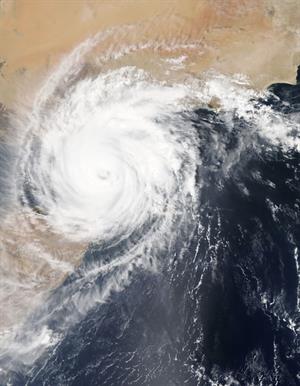
PUMPA - SMART LEARNING
எங்கள் ஆசிரியர்களுடன் 1-ஆன்-1 ஆலோசனை நேரத்தைப் பெறுங்கள். டாப்பர் ஆவதற்கு நாங்கள் பயிற்சி அளிப்போம்
Book Free Demo ON 27 October 1999, seven years after his mother’s death, Prashant had gone to the block headquarters of Ersama, a small town in coastal Orissa, some eighteen kilometres from his village, to spend the day with a friend. In the evening, a dark and menacing storm quickly gathered. Winds beat against the houses with a speed and fury that Prashant had never witnessed before. Heavy and incessant rain filled the darkness, ancient trees were uprooted and crashed to the earth. Screams rent the air as people and houses were swiftly washed away. The angry waters swirled into his friend’s house, neck deep. The building was of brick and mortar and was strong enough to survive the devastation of the wind’s velocity of 350 km per hour. But the cold terror of the family grew with the crashing of trees that had got uprooted and fallen on their house, some time in the middle of the night, damaging its roof and walls.
Explanation:
'Prashant' is the protagonist of the story, "Weathering the Storm in Ersama". The narrative is based on true events about a cyclone that struck Orissa (an Indian state, which is now known as Odisha) on October 27, 1999, killing thousands of people and damaging hundreds of villages.
In terms of climate, Orissa is in the tropical zone. The climatic conditions are mostly determined by the south-west and north-east monsoons. The state of Orissa is located in a cyclonic area. In the years 1823, 1831, 1932, 1842, 1948, 1874, 1885, 1887, 1890, 1936, 1942, 1967, 1968, 1971, and 1999, cyclones hit Orissa. The Super Cyclone of October 29, 1999, was the most destructive of these.
Balasore, Bhadrak, Cuttack, Dhenkanal, Jagatsinghpur, Jajpur, Keonjhar, Kendrapara, Khurda, Puri, Mayurbhanj, and Nayagarh were among the districts in Odisha that sustained significant damage, with essential services completely disrupted. The Ersama and Kujang blocks in Jagatsinghpur were the most severely hit.
Prashant was born in the town of Ersama in the Indian state of Orissa. Ersama is a village of 527 households in the Ersama Block in the Jagatsinghapur district of Orissa and there are above 2000 residents. Following the death of his mother, Prashant left his village seven years ago. He returned to Ersama's block headquarters after seven years to pay his friend a visit. Ersama was a small town in coastal Orissa which was eighteen kilometres from Prashant's village. On that day's evening, a massive storm (Super cyclone) raged. He did not know that that particular night would end up being the worst of his life.
A strong wind and continuous rain devastated the region. Trees were uprooted and crashed upon houses. People and houses were swept away by the force of the flood, causing screams to be heard. There was water up to the neck in Prashant's friend's residence due to the continuous rain.
As Prashant's friend's house was a pucca house, it was able to resist the strong winds, which blew at a speed of 350 kilometres per hour. Still, Prashant's friend’s family was scared because, in the middle of the night, trees had fallen on the house, damaging the roof and walls of the building.

The Super Cyclone
Meaning of difficult words:
S.No | Words | Meaning |
1. | Menacing | Likely to cause danger |
2. | Fury | Extreme anger |
3. | Incessant | Never stopping |
4. | Uproot | To pull out a tree or a plant out of ground |
5. | Crash | To hit something |
6. | Swirl | To move around quickly in a circle |
7. | Mortar | A cement, sand, and water combination used in construction to hold bricks and stones together |
8. | Devastation | Great destruction or damage |
9. | Velocity | The speed of something in a particular direction |
Reference:
National Council of Educational Research and Training (2006). Beehive. Weathering the storm in Ersama - Hasrh Mander (pp.37-42). Published at the Publication Division by the Secretary, National Council of Educational Research and Training, Sri Aurobindo Marg, New Delhi.